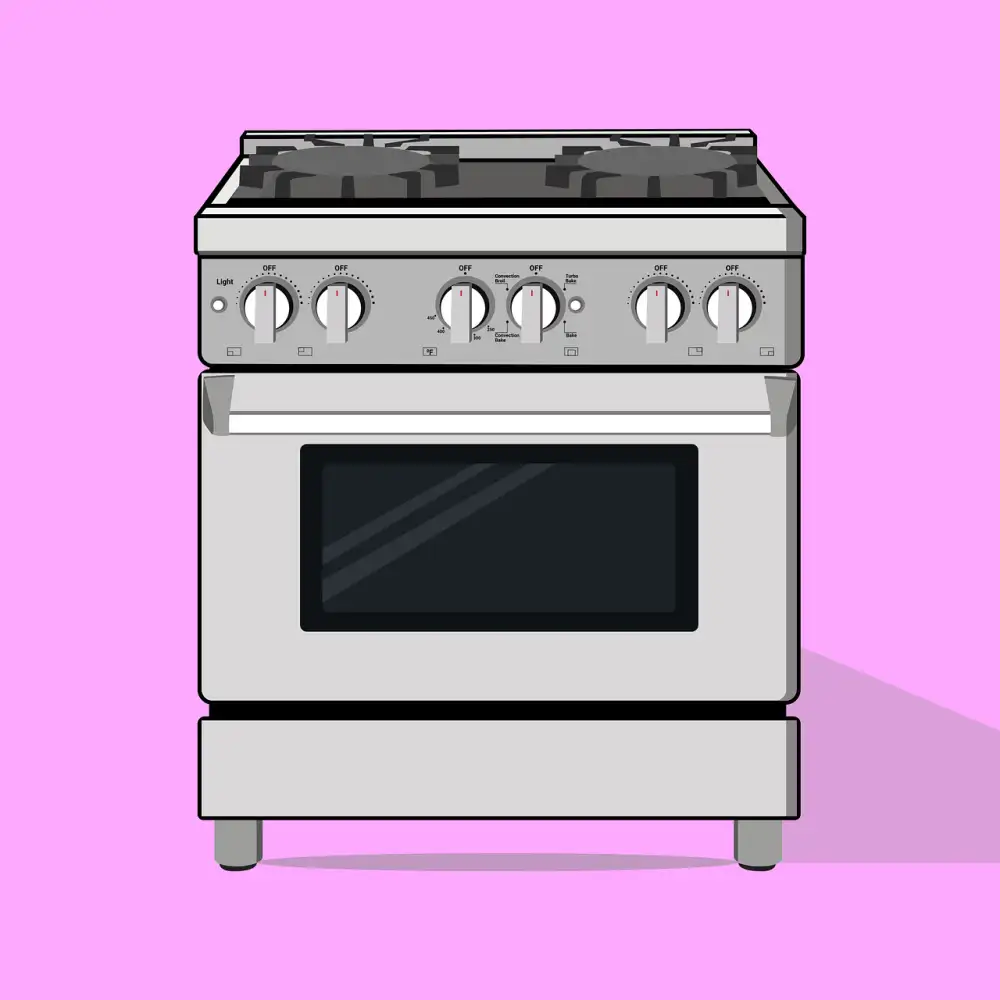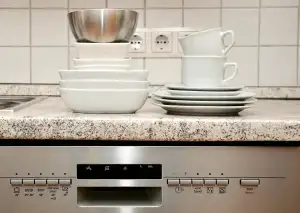Mastering the Art of Cooking: A Step-by-Step Guide on How to Use a Convection Oven at Home

- Understanding the Basics of a Convection Oven
- Preheating the Convection Oven
- Adjusting Cooking Time and Temperature
- Proper Placement of Cookware in the Convection Oven
- Utilizing the Convection Fan for Even Cooking
- Tips for Baking in a Convection Oven
- Roasting and Broiling Techniques in a Convection Oven
- Cleaning and Maintenance of a Convection Oven
Convection ovens have revolutionized the way we cook, providing a more efficient and even cooking experience. Unlike traditional ovens that rely on radiant heat, convection ovens use a fan to circulate hot air, resulting in faster and more consistent cooking. This technology not only saves time but also enhances the flavor and texture of your dishes. Whether you are a novice or an experienced chef, mastering the art of cooking with a convection oven will take your culinary skills to new heights. In this step-by-step guide, we will explore the basics of using a convection oven at home, from preheating to proper placement of cookware, baking tips, roasting techniques, and cleaning and maintenance. Get ready to unleash your inner chef and embark on a culinary adventure with your trusty convection oven!
Understanding the Basics of a Convection Oven
A convection oven is a kitchen appliance that uses a fan to circulate hot air evenly throughout the cooking chamber. This constant circulation of hot air allows for faster and more even cooking, resulting in deliciously crispy and perfectly cooked dishes.
Unlike conventional ovens, which rely on radiant heat to cook food, convection ovens use both radiant heat and forced air to cook food more efficiently. The fan inside the oven helps distribute the heat evenly, ensuring that every part of the dish receives the same amount of heat.
One key benefit of using a convection oven is that it reduces cooking time. Because the hot air is constantly moving around the food, it cooks faster than in a conventional oven. This can be especially useful when you're in a hurry or have multiple dishes to prepare.
Additionally, convection ovens are great for achieving crispy textures on foods like roasted vegetables or baked goods. The circulating hot air helps remove moisture from the surface of the food, resulting in a crispier exterior while maintaining moisture inside.
It's important to note that not all recipes are suitable for convection cooking. Some delicate dishes may require lower temperatures and longer cooking times to prevent them from drying out or becoming overcooked. It's always best to consult your recipe or adjust accordingly when using a convection oven.
By understanding these basics of how a convection oven works, you'll be better equipped to utilize this powerful tool in your culinary adventures. With its ability to cook faster and more evenly, you'll soon discover new levels of creativity and artistry in your cooking endeavors.
Preheating the Convection Oven
Before using a convection oven, it is important to preheat it. This step ensures that the oven reaches the desired temperature before you start cooking. To preheat a convection oven, simply set the temperature according to your recipe's instructions and allow the oven to heat up for about 10-15 minutes.
During this time, the convection fan will circulate hot air throughout the oven, ensuring that it is evenly heated. Preheating is crucial because it helps in achieving consistent cooking results and allows for more accurate baking and roasting times.
Remember to always check if your convection oven has reached the desired temperature by using an oven thermometer. This will ensure that your food cooks properly and prevent any undercooking or overcooking mishaps.
By preheating your convection oven, you are setting yourself up for success in creating delicious meals with perfect texture and flavor.
Adjusting Cooking Time and Temperature
Adjusting the cooking time and temperature is crucial when using a convection oven. Since convection ovens circulate hot air, they cook food faster than traditional ovens. To compensate for this, it's important to reduce the cooking time by about 25% and lower the temperature by approximately 25 degrees Fahrenheit. This ensures that your food cooks evenly and doesn't become overcooked or dry. However, it's always recommended to keep an eye on your food and use a meat thermometer to ensure it reaches the desired internal temperature. By adjusting the cooking time and temperature, you'll be able to achieve perfectly cooked meals every time you use your convection oven.
Proper Placement of Cookware in the Convection Oven
Proper placement of cookware in a convection oven is essential for achieving optimal cooking results. When using a convection oven, it is important to leave enough space between the cookware and the oven walls to allow for proper air circulation. This ensures that heat is evenly distributed throughout the oven, resulting in even cooking.
To achieve this, it is recommended to leave at least 1-2 inches of space between the cookware and the oven walls. This allows hot air to circulate freely around the food, promoting even browning and cooking.
Additionally, it is important to avoid overcrowding the oven with too many dishes at once. Overcrowding can hinder proper air circulation and lead to uneven cooking. If you need to cook multiple dishes simultaneously, consider using multiple racks and spacing them out evenly within the oven.
When placing cookware in a convection oven, make sure to use pans and baking sheets with low sides or no sides at all. This allows hot air to flow more freely around the food, resulting in crispier textures and better browning.
By following these guidelines for proper placement of cookware in a convection oven, you can ensure that your dishes are cooked evenly and achieve delicious results every time.
Utilizing the Convection Fan for Even Cooking
One of the key features of a convection oven is its powerful fan, which circulates hot air throughout the cooking chamber. This fan helps to distribute heat evenly, resulting in perfectly cooked dishes.
To make the most of this feature, it's important to understand how to utilize the convection fan effectively. First, ensure that any cookware or baking sheets you use have low sides or are completely open. This allows the hot air to flow freely around your food.
Next, when using the convection setting, reduce the cooking temperature by about 25 degrees Fahrenheit compared to traditional recipes. The circulating hot air cooks food faster and more efficiently, so adjusting the temperature ensures that your dishes don't overcook.
Additionally, keep in mind that cooking times may be shorter when using a convection oven. It's recommended to start checking for doneness a few minutes earlier than indicated in your recipe.
Lastly, avoid overcrowding the oven as it can restrict airflow and hinder even cooking. Leave enough space between dishes for hot air to circulate properly.
By utilizing the convection fan correctly, you'll achieve consistent results with every dish you prepare. Enjoy evenly cooked meals that are sure to impress your family and friends!
Tips for Baking in a Convection Oven
Remember, practice makes perfect when it comes to baking in a convection oven. Adjusting recipes and experimenting with different techniques will help you achieve delicious results every time!
Roasting and Broiling Techniques in a Convection Oven
Roasting and broiling are two popular cooking techniques that can be easily mastered with a convection oven. When roasting, it is important to preheat the oven to ensure even cooking. Place the meat or vegetables on a roasting rack or directly on a baking sheet. The convection fan will circulate the hot air, resulting in a crispy exterior and juicy interior.
For broiling, adjust the oven setting to "broil" and place the food on a broiler pan or directly on the oven rack. The intense heat from the top heating element combined with the convection fan will quickly cook and brown the food. Keep a close eye on the food as it can easily burn due to the high heat.
Remember to use oven-safe cookware when roasting or broiling in a convection oven. The circulating hot air may cause lightweight pans to warp or buckle. Additionally, always use oven mitts when handling hot cookware.
With these techniques, you can achieve perfectly roasted meats and vegetables with a golden brown crust and tender interior. Broiling will give your dishes that delicious caramelized finish. Experiment with different recipes and ingredients to unleash your culinary creativity using your convection oven.
Cleaning and Maintenance of a Convection Oven
Cleaning and maintaining your convection oven is essential for its longevity and optimal performance. After each use, allow the oven to cool down before cleaning. Start by removing any removable parts such as racks and trays. Wash them with warm soapy water, rinse thoroughly, and dry before placing them back in the oven.
To clean the interior of the oven, wipe away any spills or food debris using a damp cloth or sponge. For stubborn stains, make a paste using baking soda and water, apply it to the stain, let it sit for a few minutes, then scrub gently with a non-abrasive sponge. Avoid using harsh chemicals or abrasive cleaners that can damage the oven's interior.
The exterior of the convection oven can be cleaned with a mild detergent and water solution. Use a soft cloth or sponge to wipe away any dirt or grease. Be sure to dry the exterior thoroughly to prevent any water spots or streaks.
Regular maintenance includes checking the convection fan for any build-up of grease or debris. If necessary, remove the fan cover and clean it carefully using warm soapy water. Ensure that all vents are clear of obstructions to maintain proper airflow.
It's also important to check the door seal regularly for any signs of wear or damage. A faulty seal can lead to heat loss and inefficient cooking. If needed, replace the seal following the manufacturer's instructions.
Lastly, schedule professional maintenance at least once a year to ensure that all components are functioning correctly and efficiently.
By following these cleaning and maintenance tips, you can keep your convection oven in excellent condition, ensuring delicious meals for years to come.
In conclusion, mastering the art of cooking with a convection oven can greatly enhance your culinary skills. By understanding the basics and following the proper techniques, you can achieve perfectly cooked and evenly baked dishes every time. Remember to preheat the oven, adjust cooking time and temperature accordingly, and place your cookware properly for optimal results. Utilize the convection fan for even cooking and experiment with baking, roasting, and broiling techniques. Lastly, don't forget to regularly clean and maintain your convection oven to ensure its longevity. With practice and creativity, you'll be able to create delicious meals that will impress both family and friends. Happy cooking!
Published: 17. 12. 2023
Category: Home



